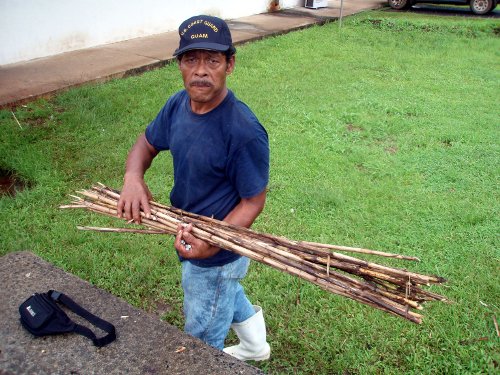
Simiai
Simiai Manuel holds the minor rafters (rahu) used in thatching.

Simiai
Rahu: minor rafters made of either Phragmites karka (Pohnpeian: lirau) or Saccharum spontaneum (Kosraen: loa, Pohnpeian: ahlek).
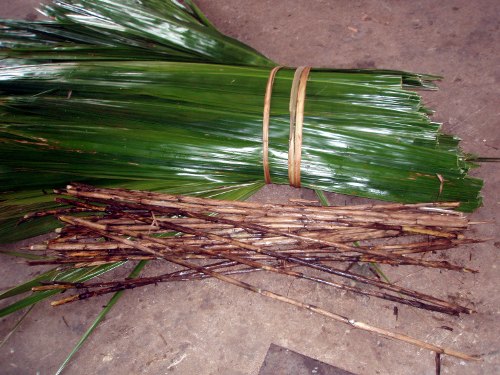
oahs rahu
Nohk: The main rib of the stem of a palm frondlet. This is split with the teeth and halved to assist in bending the frondlet around the rahu. This process is necessary due to the thickness of the Metroxylon amicarum (Pohnpeian: oahs). Oahs is indigenous to Pohnpei. (Pohnpeian: oahs) midrib.
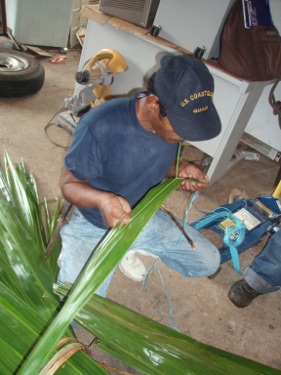
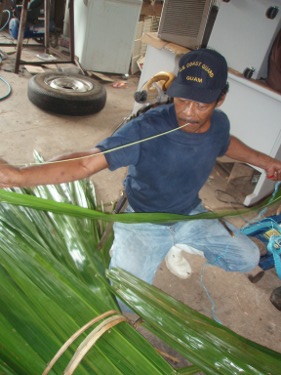
Nohk removal
There are two styles of thatch, doakoahs en Ruk and doakoahs en Pohnpei. Doak means "to pierce" with a needle-like object. Simiai noted that in the past the tip of a marlin (a bill fish) was used as a needle. Today the sharpened end of a toothbrush with a hole in the end is a good needle, nails are also sometimes used. Nails, however, do more damage to the frondlet due to their heads.
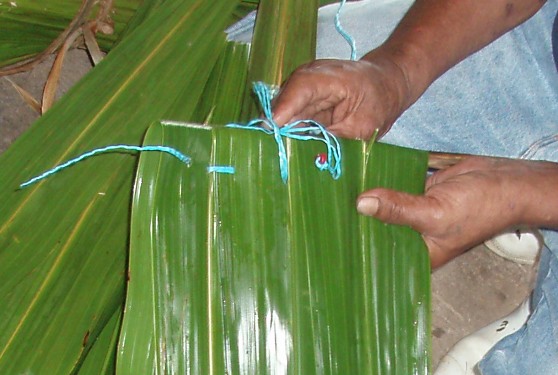
Doakoahs en Ruk (Chuuk)
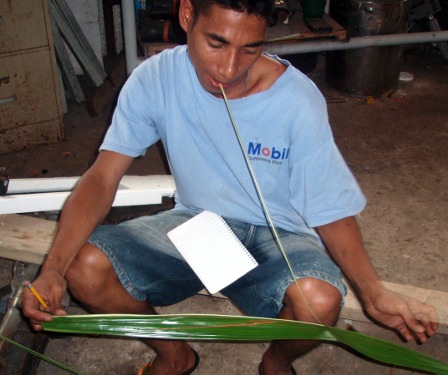
Santryco removes nohk
Doakoahs en Pohnpei differs in being laid on a 45 degree diagonal. Note that traditionally Pohnpeian thatch was not covered by a net to protect the roof from wind damage. On the flat, outer island atolls in mid-ocean the wind is a more significant source of damage. On Pohnpei rain and subsequent thatch rot are apparently more problematic. Pohnpei thatch is not netted down. The thatch is designed to catch the wind and "fluff" slightly, aiding in drying of the thatch and slowing rot.
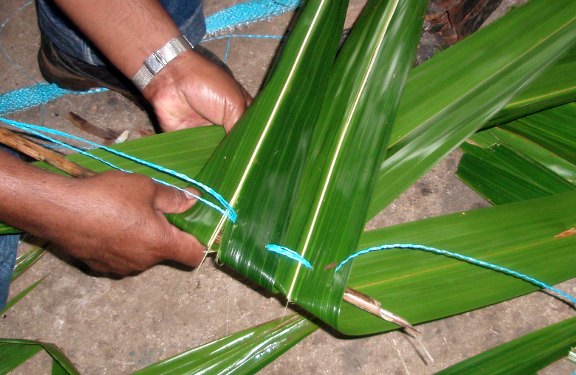
Doakoahs en Pohnpei
Each new frondlet is laid down such that the margin lays next to the midrib.
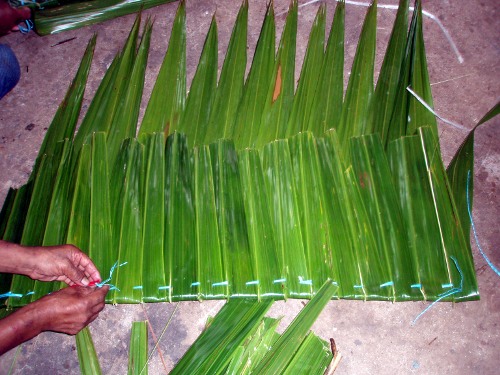
Doakoahs en ruk
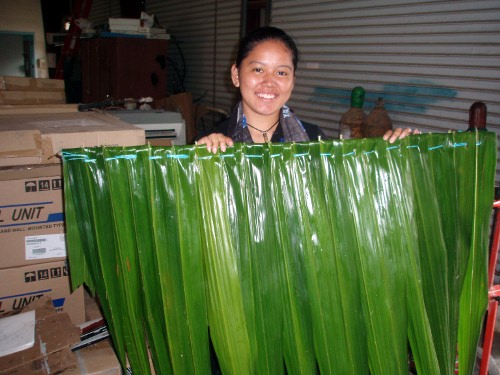
Arleen, from Chuuk, displays her Doakoahs en Ruk. Both styles of thatch are seen and produced on Pohnpei by Pohnpeians.
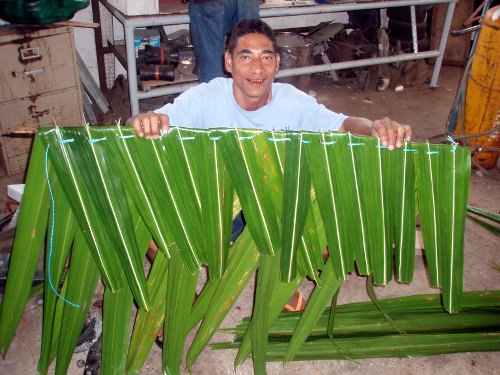
Santryco
Cynthia works on a doakoahs en Ruk. Note that the frondlets are folded so as to create a one-third, two-thirds split in relation to the length of the frondlet. The base is one-third, the apical end is two-thirds.
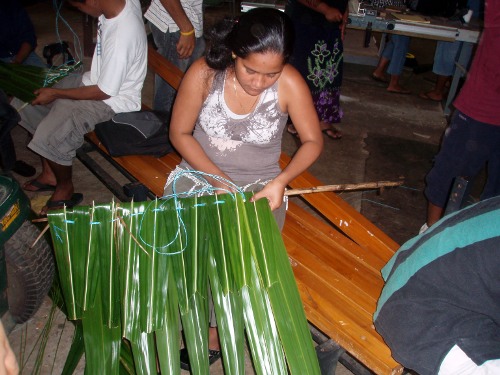
Cynthia
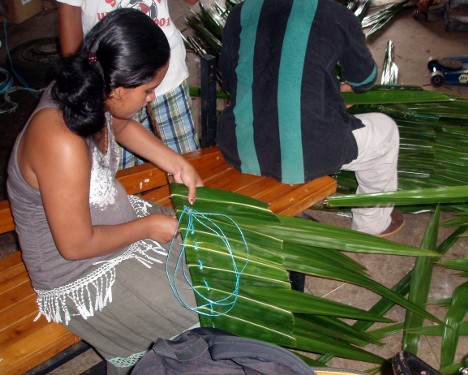
Fold split 2:1
Kosrae does not have oahs. Kosrae is presently thought to have only four species of palms. Coconut (Cocos nucifera), betel nut (Areca catechu), Ponapea ledermanianna (Kosrae: kitacr, Pohnpei: kedei) , and Nipa fruticans. On Kosrae Nipa fruticans is used for thatch (Kosrae: fahsuc, Pohnpei: parem). Fahsuc is narrower than oahs. Thatching frondlets are laid down in pairs and folded at the midpoint. Note that Cantina is working with oahs and not the usually used fahsuc.
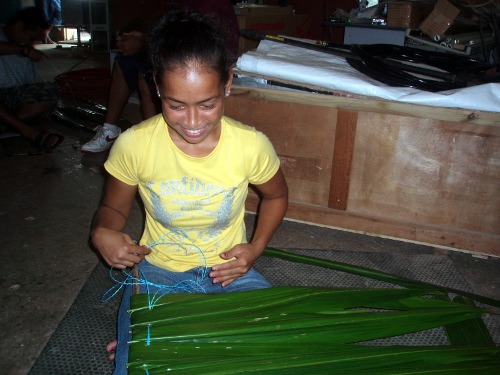
Cantina
Note that Cantina is working with pairs of frondlets in the following image.
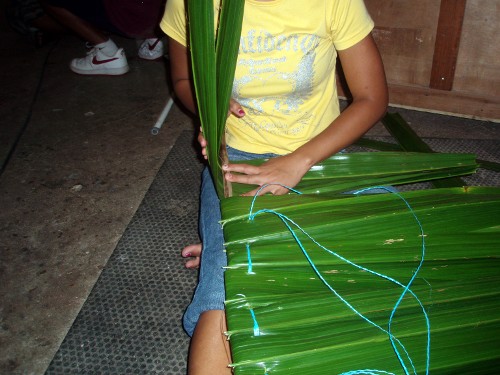
Frondlet pairs
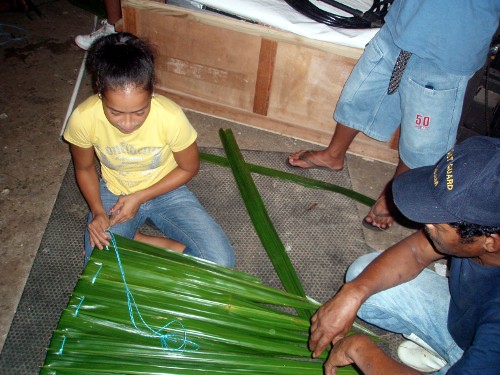
Cantina
Note the spacing on the weave. With a narrower Nipa palm frondlet the weaving would naturally be tighter.
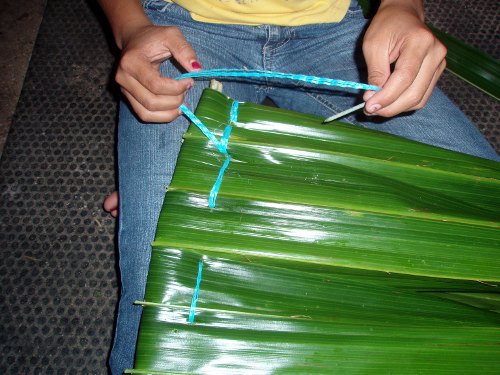
Kosraen weave
Suanrita has made thatch before and displays her skills with a tight weave and well-set frondlets.
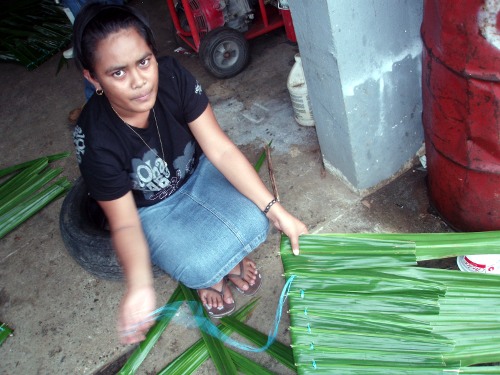
Suanrita
The college is a learning community. Here the instructors are both skilled in local traditional arts and work for the college as members of security. Uniquely Micronesian indeed.
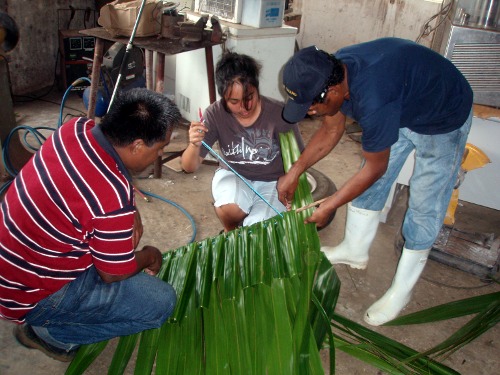
Learning
The nohk halves are not thrown away, they make a good broom.
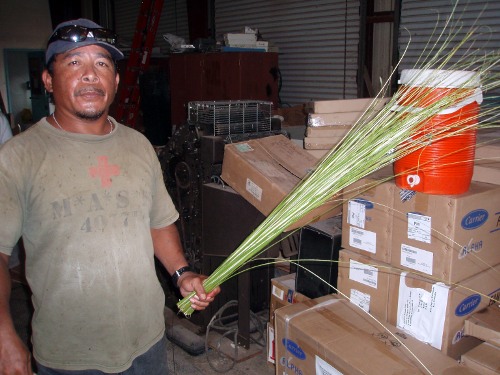
local broom
Santryco works on the thatch unit that goes on the crown of the roof called a pwarapar. [Source: Robert Andreas]
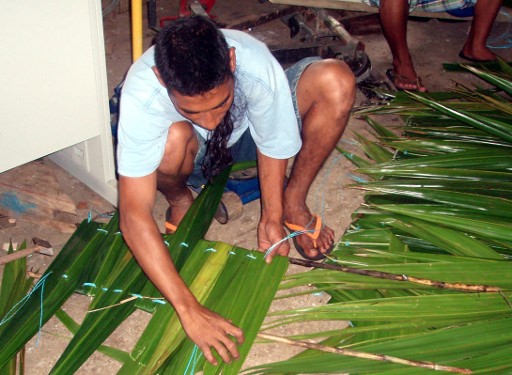
Santryco
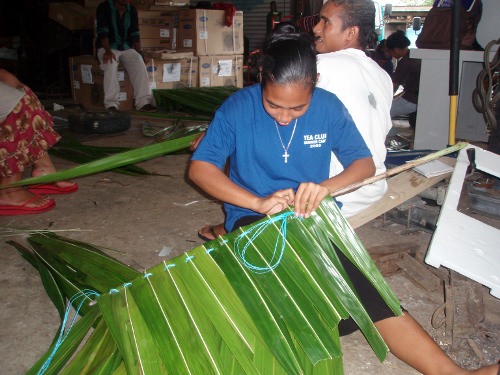
Stephanie
Linguistic note: dok is "pierce" while oahs refers to Metroxylon amicarum. The combining of the words is what is known in linguistics as verb noun incorporation or incorporated objects. When the word is by itself, it is dok (intransitive), which means yes, to pierce or to stab. The transitive form of it on the other hand is doakoa. The use of /oa/ is sometimes /o/, depending on the following vowel or consonant sounds. For instance, doakoahs, to pierce oahs, dokpwihk, literally to stab a pig (to pig-slaughter), dokomwomw, to spearfish,etc. [Source: Robert Andreas]